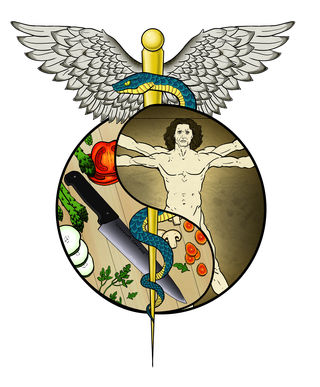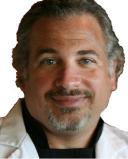Health
Culinary Medicine
A new frontier for innovation, integration, and implementation.
Posted November 10, 2019
While things have been quiet on these pages over the last several months, work in the background has been proceeding at a breakneck pace. This has culminated in the release of one of the first university-based and accredited courses in Culinary Medicine; An Introduction to Culinary Medicine taught at The University of Montana. This graduate-level introductory course sets the stage for interested persons to pursue a more advanced degree in Culinary Medicine.
This, of course, raises the question, “What is Culinary Medicine?”

A simple Google search returns over 23 million results. And it appears almost everyone operates on a different definition. There are programs and instructions that originate from a culinary/hospitality-based background. Many of these seem to simply add some nutrition to contemporary culinary teachings; endless recipes featuring kale and quinoa come to mind. Some appear to originate at the fringes of naturopathic/holistic ideology and eschew any semblance of medical science whatsoever. Others are principally aimed at weight loss or something that can be marketed directly to consumers. Still, others spring from the hallowed halls of venerable institutions rehashing the same tired guidelines and recommendations that have failed so epically over the last half-century. The image of those kale and quinoa recipes returns to complete the circle of boredom.
As a new and emerging discipline, Culinary Medicine is an evolving science. As a scientific field of study, it should continue to challenge existing hypotheses and follow new ones wherever the data takes us. So, with that being said, the bottom line is that at present there is no standard definition. It is completely, caveat emptor! When you see that phrase, it is up to you to look under the hood and see what nuts and bolts truly comprise the construction of that engine.
At the University of Montana, the following definition is used.
Culinary Medicine: The multidisciplinary application of evidence-based decision making in the selection of ingredients and techniques used in preparing foodstuffs with a goal of achieving and maintaining health and wellness through an optimized food experience.
That’s a mouthful. In order to ease the digestive process, it’s best to break this down into small bites. Firstly, culinary medicine is not the purview of one department, one ideology, one person, or one particular point of view. Our current program is founded on the joint efforts of our accredited culinary program and the College of Health at the University. However, there is input not only from culinary studies, nutrition, and medical sciences; but also from psychology, sociology, agriculture, microbiology, statistics, genetics, anthropology, and the list goes on – but you get the idea.
Culinary Medicine incorporates the appropriate data and insights from these respective fields of study basing that on the solid base of scientifically validated evidence. In acquiring and synthesizing validated data sets from a wide field of study it is both multidisciplinary and evidence-based.

Culinary Medicine is not the Culinary Arts, although understanding and mastering the basic cookery skills is a prerequisite. Culinary Medicine is not the practice of Medicine and should not be regarded as such. Although, Culinary Medicine certainly can positively contribute to the efforts of preventive medicine. The information which is gleaned from all the various disciplines that make up the body of study is that which is focused on ingredients and their production, harvesting, processing, cookery and ultimately their effect on health and wellness.
A focus on health and wellness is a critical component. It implies, rightly, an emphasis on more than just meeting RDAs and limiting percentages of saturated fat. It is more than just fueling the machine. This correctly implies the acknowledgment that the meal for human beings is an experience inclusive of nutritional effects, but with ramifications greatly beyond that narrow perspective (we need more than tasty kale and quinoa recipes).
The food experience, which I’ve written extensively about in Food Shaman: The Art of Quantum Food, is something unique to us individually, but also operates at a societal and cultural level as well. Thus, it naturally must include what we might term the “softer edges” of the food experience. It is more than just what we eat, but with whom, how, where, and why we choose to eat what we do and how those decisions affect us. It is the non-ingredient influences on our dietary choices.
Our lives operate around our relationships. If the Harvard happiness study (comprised of the Grant and Glueck studies) and the investigations of National Geographic’s blue zones have confirmed anything; it is that the quality (expressly not the quantity) of the relationships that we create and maintain during our lives is arguably the single most important variable in determining our individual health, happiness, and wellness. Amongst our relationships, our relationship with food and the shared food experience between us is both common and yet unique to every person on the planet. It always has been.
It is time that we return to our roots and both integrate and evolve our science into the study of Culinary Medicine. The opportunities are endless – and delicious!




